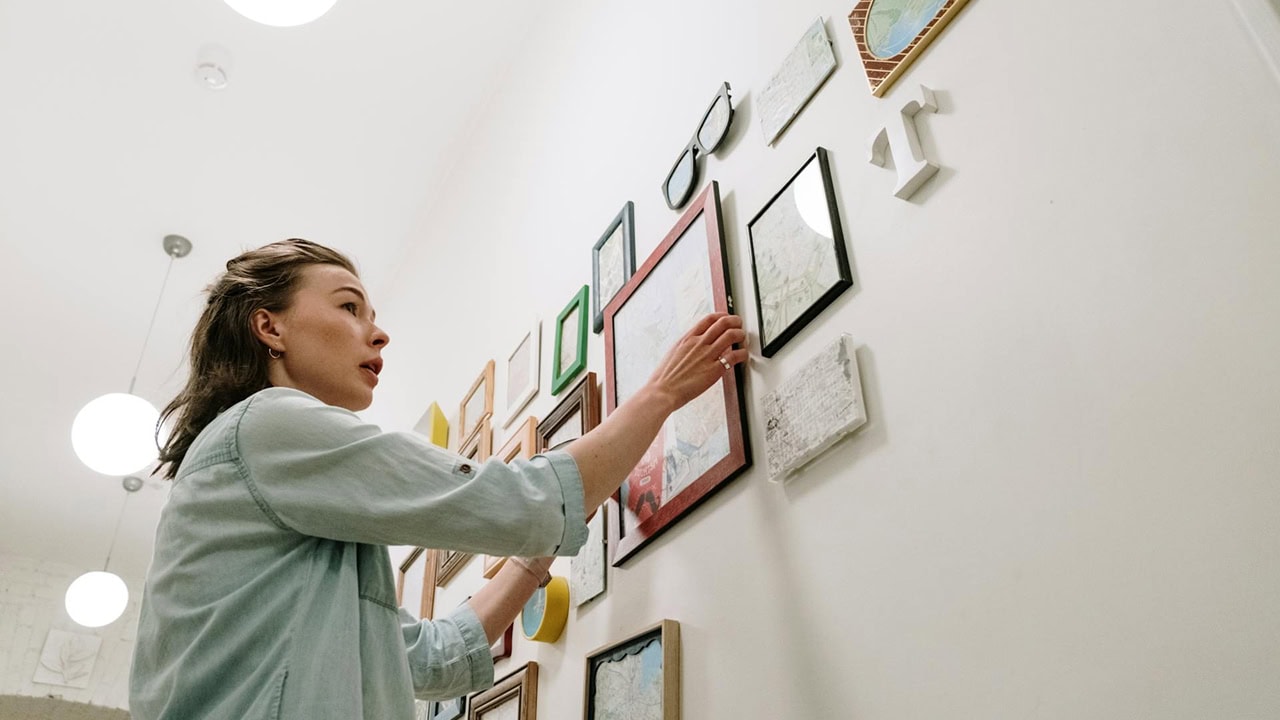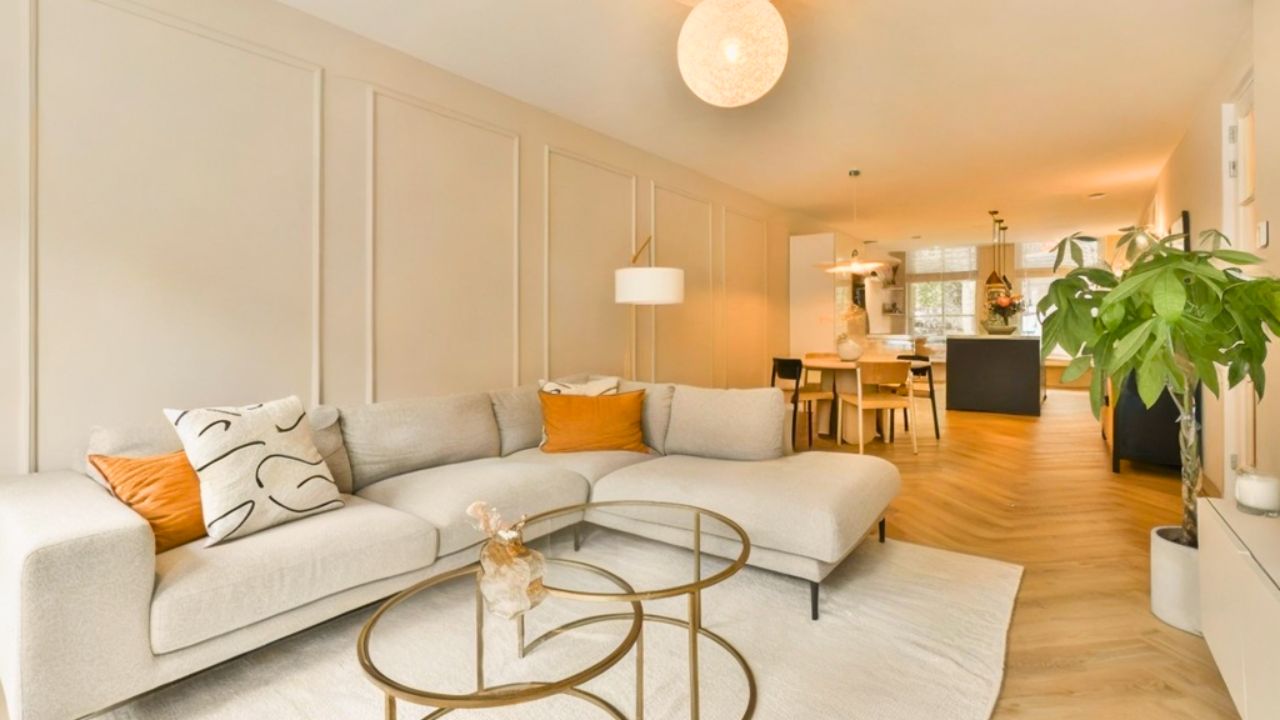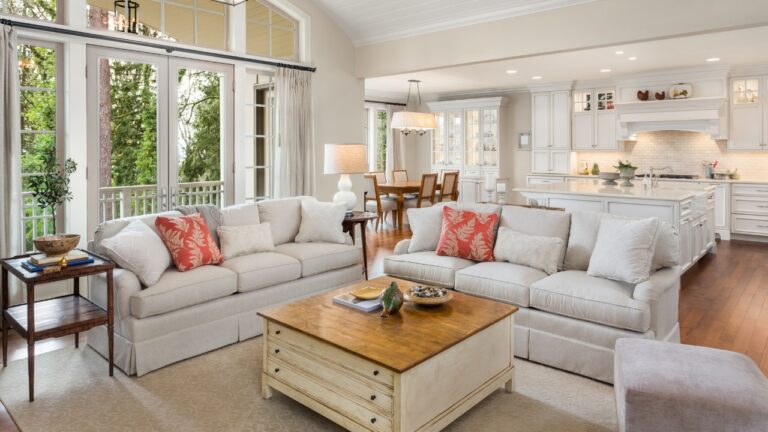What to fix in your house if it always feels visually cluttered
If the house feels messy even when it’s technically clean, you’re probably dealing with visual clutter—busy lines, loud packaging, and too many small items on display. The fix isn’t purging everything you own. It’s making a handful of decisions that quiet the view so your brain can relax.
This is the short list that changes the room right away.
Contain daily tools on trays
Remote controls, salt and pepper, soap and sponge—each set lives on a tray sized to the job. Trays create edges, and edges create calm. When the ketchup bottle has a boundary, your kitchen reads cleaner in three seconds. Same with a bathroom: soap and lotion on a small dish beats five bottles at the sink.
If something doesn’t fit the tray, it probably shouldn’t live out.
Hide labels, not function
The fastest visual win is decanting. Move laundry pods into a lidded jar, rice and pasta into clear bins, and dish soap into a simple pump. Keep the branded bottles in a bin for refills. You didn’t change the product; you changed the view. That swap alone makes an average room feel grown-up.
Use painter’s tape inside lids to note product names if you’re worried about mix-ups.
Go larger and fewer on walls

Many small frames make walls look fussy. Two or three larger pieces give you impact with less noise. If you love a gallery wall, use the same frames and mats to unify. Hang at eye level and align bottoms or centers to create a clean line your eye can follow.
Leave some walls blank. Rest is part of the composition.
Reduce the number of finishes
Too many metals, wood tones, and plastic colors turn a room into static. Pick one or two per room and slowly replace the rest as you go. Even just matching lamps and frames in one space calms the field. Your eye stops working so hard to make sense of the mix.
If you can’t replace, group like with like so finishes live together instead of scattered.
Edit surfaces to one focal point
Coffee table: a tray with a bowl and one book. Mantel: mirror plus two flanking objects. Nightstand: lamp, book, small dish. When every surface shouts, nothing lands. Give each zone one focal point and let air do the rest.
Put extras in a basket for rotation. You don’t have to display it all at once.
Choose closed storage for the messy stuff
Open shelving only works for uniform items. Kids’ toys, cords, office supplies, and pantry snacks do better behind doors or in lidded baskets. One closed cabinet in the living room can save the entire look of the space. This isn’t hiding your life; it’s respecting your sanity.
Label inside the lid so everyone can reset without asking.
Tighten the color story to three

Pick a base neutral and two accent colors per room. Repeat them across textiles and small items. A tight palette turns random into rhythm. If you’re overwhelmed, swap busy pillow covers for solids and leave one pattern on the rug or curtains, not both.
If a favorite item breaks the palette, it can stay—just don’t let it multiply.
Straighten lines and fix scale
Crooked art, short curtains, and rugs that float make rooms feel messy. Hang curtains high and wide, center art over furniture, and use a rug large enough to catch front legs. These are line fixes, not shopping sprees. Clean edges read as calm even with kids and real life in the mix.
Spend five minutes once a week doing a line check. It holds the progress.
Visual clutter disappears when you create edges, hide loud labels, reduce finishes, go larger and fewer, and keep a tight color story. You still live in your house—you just see less static and more of what you love.
Like Fix It Homestead’s content? Be sure to follow us.
Here’s more from us:
10 things that make your house feel less welcoming without saying a word
10 Upgrades That Make Your House Look Fancier Than Your Neighbor’s
*This article was developed with AI-powered tools and has been carefully reviewed by our editors.







